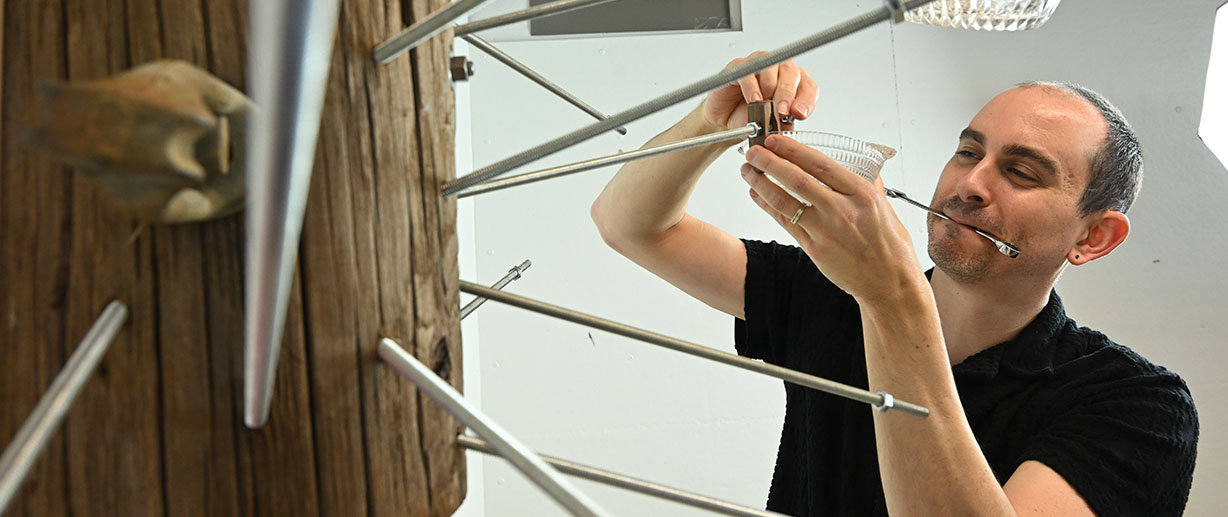Michael Webster built and installed subflooring and a slat of hardwood flooring that was six feet wide along a Chicago, Illinois, street while he was a graduate student.
The city removed a portion of sidewalk and was slow to fill the hole during the Chicago winter. People were stepping off the sidewalk and walking in traffic. Webster saw an opportunity to help pedestrians through an art project that resembled a small portion of a basketball court sandwiched between concrete squares.
“I’m definitely a maker,” Webster says. “I come into art with the joy for making things and getting my hands messy.”
Webster, assistant professor of studio art at Wofford College, is one of nine artists selected as a 2023 State Fellow for Visual Arts through South Arts. Artists received $5,000 grants and are competing for $25,000 and $10,000 in additional prizes. He will have three pieces in a four-city traveling exhibit that opens in Biloxi, Mississippi, on Aug. 17.
South Arts aims to decentralize the art world by giving exposure to artists in the South.
His work will reflect on “the becomings and undoings of space.”
One piece, titled “Leak,” was inspired by a signpost that he saw in Salt Lake City, Utah, that zigged and zagged to wrap around a tree that was no longer there. He mimics the signpost with a sculpture made from alder wood that hangs on a wall while attached to rubber tubing to create a fountain. “Signal” includes sections of a utility pole that has thrift store crystal tableware attached by steel rods while symbolizing data being shared through fiber optics.
“Leak” and “Signal” reflect relationships with infrastructure.
A third piece, titled “to become an echo,” explores digital memory. Webster has collected about 200 bricks from sites around Spartanburg that are being redeveloped. He scanned some of the bricks and used a 3D printer to generate bricks for the piece.
“There is always information lost in in the process, and we’re thinking about what could be missing when recording digital memories,” Webster says.
This summer, he will talk to local nonprofits about their needs to determine how he could reuse the bricks to benefit others.
“These are bricks that are divorced from their histories,” Webster says. “They might not tell a specific story, but a collected story on the history of Spartanburg. My hope is over the next year or so is to find ways to build new functional entities with these bricks.”
The 3D bricks for the exhibit will look as though the pile of bricks is floating while attached to a pole. Strands of the filament used by a 3D printer are visible to highlight the material in its basic form before becoming what Webster desired.
Webster is a champion for connecting students to opportunities to exhibit their artwork across the community. His students will learn more than what inspired him while developing his work during the fellowship. They also will learn how he built crates to transport his artwork to galleries, and the detailed instructions developed to guide installers because he won’t be at many of the exhibit sites.
“I can imagine some of our students receiving the same fellowship,” Webster says.
